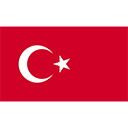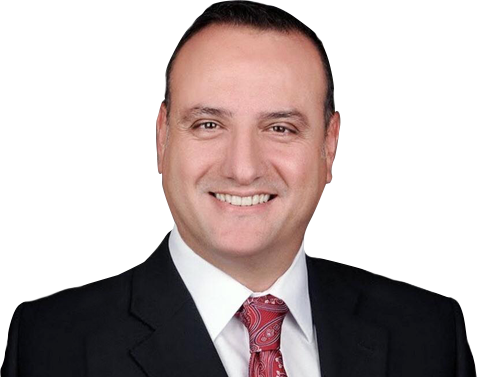
Ileal Interposition Surgery as Obesity Surgery
The most effective and durable treatment known for obesity is weight-loss surgery. Less than 10% of morbid obese patients who try to loose weight with diet and exercise only may achieve this goal. Almost all patients who loose weight regain these and much within a period shorter than a year. In fact, obesity surgery has a stronger effect than any kind of diet and this effect continues for long years.
Obesity surgery is divided into two groups as volume restriction and volume & absorption restriction.
Adjustable Gastric Banding (AGB) and Sleeve Gastrectomy (SG) procedures are purely restrictive operations.
Single Anastomosis Bypass (Mini Gastric Bypass), Gastric Bypass (R-Y Gastric Bypass), Biliopancreatic Diversion ± Duodenal Swith (BPD±DS), Duodejejunal Bypass ± Sleeve gastrectomy (DJB ± SG) operations are combined surgeries including absorption defects and volume restrictions with different degrees. Fat and protein malabsorption occurs after these surgeries. This may be called restriction, because all of these operations are performed for restriction of absorption. However, advanced restriction of fat absorption causes insufficient absorption of vitamins and minerals which are vitally important. Severe nutritional disorders may appear in these patients. These patients live with deficiency of iron, vitamin B12, Folic acid, Vitamin D and very different trace elements and minerals for lifetime. They have to use these drugs regularly during their life. Studies conducted have showed that complications such as osteoporosis in particular may appear in patients who have been followed for over 10 years during long term.
“You do not have to use vitamin for lifetime”
Ileal Interposition is a different surgery than all abovementioned procedures. The biggest difference of ileal interposition surgery is that it does not cause absorption disorder in the body. The procedure performed in ileal interposition is a change in the path of small intestines. In the method especially performed for treatment of morbid obesity, duodenum is not separated from stomach like ileal interposition performed for treatment of Type 2 Diabetes. We prescribe two effervescent tablets or one vitamin tablet to the patients once a day for 3 to 6 months. Patients do not need this after 6 months.
Ileal Interposition surgery provides more efficient weight loss than all methods known and applied for treatment of morbid obesity and patients do not face with vitamin deficiency risk for lifetime. Ileal Interposition surgery is the most superior and cozy treatment option applied for treatment of morbid obesity by high power of action and high life quality after the surgery.
Ileal Interposition as Obesity Surgery and Two Step Treatment
Ileal Interposition may be applied in tree forms:
- Gastro-Ileal Interposition with Bipartition (GIB)
- Duodeno-Ileal Interposition (DII)
- Jejuno-Ileal Interposition (JII)
The second type applied on duodenum (DII) is the most potent form of these. Because connection of stomach and small intestine is anatomically interrupted. In the other two froms the GIB and JII, duodeno-gastric anatomy is kept as before. However there is an important difference between GIB and JII: When terminal ileal segment is interposed to jejunum (as in JII) the whole food passes trough duodenum and the negative incretin response against insulin action is provoked. However, GIB brings the distal ileum directly to stomach with a wide anastomosis which results to achieve almost all of the gastric content, and forms a “functional duodenal exclusion”! So GIB is as potent as DII in suppression of ForeGut and stimulation of HindGut.
1. First Step Laparoscopic Sleeve Gastrectomy
To perform ileal interposition surgery on patients with a BMI over 50 kg/m2 is technically difficult. Because, organ lipoidosis and volumes increase when intraabdominal lipoidosis increases. Since intraabdominal area is narrowed in high body mass indexes, it is very difficult to apply these operations within a session and a reasonable anesthesia period. Therefore, we apply Laparoscopic Sleeve Gastrecomy operation only as first step in our patients whose BMI > 50 kg/m2. This operation may be easily performed on super obese patients below 2 hours. Anesthesia duration of patients become shorter. Risks decrease. Hospitalization and intensive care stay of patients also decrease.
Advantages of Two Step Ileal Interposition Procedure in Super Obesity:
Anesthesia Period is Shorter. In prolonged operations, both heart and lungs gets tired. The medications for anesthesia may effect the heart and lungs that have limited capacity due to severe obesity. Shorter and faster operation prevents these problems. Intensive care stay after the surgery becomes shorter.
Problems due to fatty liver decrease. Fatty liver diseases such as NASH (Non alcoholic steatohepatitis) may be present in livers of patients with very high body mass index. When this lipoidosis progresses, hepatic functions of detoxification alters. Uncontrolled hepatic lipoidosis causes deaths due to hepatic cirrhosis. A fast sleeve gastrectomy fixes your intraabdominal adiposity as well as fatty liver disease. Liver is effected less from anesthesia gases in the second procedure.
Capacity of Heart Increases. Excess weights that will be lost with a sleeve gastrectomy contributes to recovery of heart functions before a permanent operation. More comfortable anesthesia is provided while performing complementary ileal interposition surgery.
2. Second Step: Ileal Interposition
BMI value of the patient who loose excess weights after Sleeve Gastrectomy reduces mostly below 40 kg/m2. At this stage, Ileal Interposition surgery is added for permanent weight loss and to establish long term metabolic control. At this stage, intraabdominal space increases because the patient is not super obese anymore. The most important factor for increase of intraabdominal space is decrease of hepatic fat and reduction of hepatic volume. A second important contribution is dissolving and disappearance of fatty tissues surrounding small intestines and large intestines. When visceral adiposity disappears by this way, intraabdominal space increase and small intestines can easily be managed.
Most of ileal interposition operations performed because of Type 2 Diabetes are applied on slim or slightly over weighted patients. Therefore, it may be applied comfortably and easily. In fact, the same comfort can not be found in super obese patients. Therefore, we apply “staged surgery” for these patients.
Importance of Sleeve Gastrectomy in Stages Surgeries
All surgical techniques applied for control of permanent weight loss and metabolic diseases were designed to create more or less malabsorption. The only exemption is ileal interposition surgery. Together with ileal interposition, the most important common points of Biliopancreatic Diversion-Duodenal Switch (BPD/DS) and Duodejejunal Bypass-Sleeve Gastrectomy (DJB/SG) is gastric restriction (sleeve gastrectomy). The first stage of three surgeries is sleeve gastrectomy. Pylorus muscle is preserved and duedonum is separated from the stomach in three surgeries.
Pylorus muscle is not preserved or deactivated in other obesity surgery methods. These are Mini Gastric Bypass, Roux-N-Y Gastric Bypass and Biliopancreatic Diversion (Scopinaro). Reconstruction operations may be very difficult after these surgeries.
In fact, Sleeve Gastrectomy has very strong advantages when performed as first option.
- It provides efficient weight loss.
- It preserves weight losses for long years.
- It does not cause malabsorption. Vitamin and mineral use for lifetime is not essential.
- It may be converted into any surgery which preserves pylorus muscle even weight regain appears after years.
- Weight regain after sleeve gastrectomy depends on enlargement of gastric pouch. Sleeve gastrectomy may be repeated in these patients. Or double layer pilication may be performed. In this procedure, enlarging part of the stomach is folded over and sutured. Gastric tube is narrowed by a short procedure.
- In weight Gains Due to Enlarged Gastric Pouch after Sleeve Gastrectomy:
- Gastric Plication (Gastric Folding)
- Re-Sleeve Gastrectomy
- Duodenojejunal Bypass
- Biliopancreatic Diversion / Duodenal Switch
- Duodenoileal Transposition
may be performed.
Sleeve Gastrectomy is a very important surgery option with these advantages. The only long term complication is weight regain. When weight regain starts after sleeve gastrectomy, an ileal interposition that will be performed preserves weight loss.
Gold standard treatment of patients with sleeve gastrectomy who has regained weight will be ileal interposition. Because, ileal interposition has a strong metabolic control effect using both ForeGut Supression and HindGut Stimulation and no malabsorption.
 English
English Turkish
Turkish

